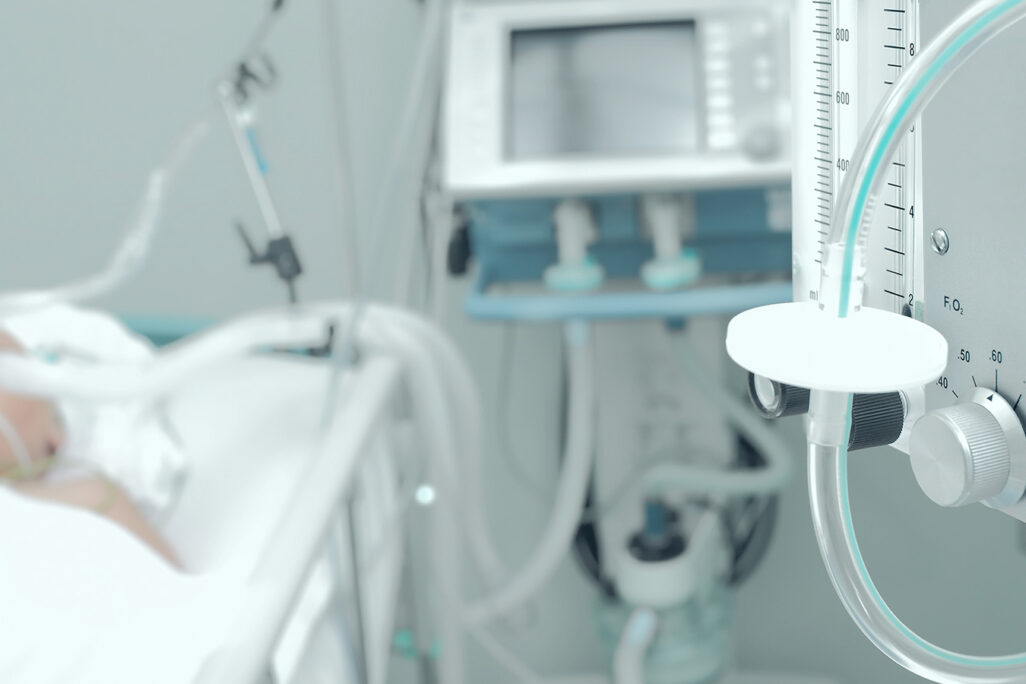
80 coronavirus patients in serious condition are hospitalized in Israel, as of today (Monday). Most of them are on life support by artificial respiration. The numbers are constantly rising, without any hope in sight that the number of patients on life support will shrink.
In Germany, a country with higher availability of ventilators, about 0.5% of coronavirus patients have died, compared to 10% in Italy
According to data released last week by the Knesset Research and Information Center, there were 758 Intensive Care Units in Israeli hospitals last year, of which only 32 were respiratory ICUs. The health system is working to increase this number as quickly as possible, but the rate of progress has a significant limiting factor: the number of ventilators available. According to the report, the state has 1,437 available ventilators, out of 2,173 ventilators in total, not including 28 dysfunctional devices. Within a few weeks, this may not suffice.
Director-General of the Ministry of Health, Moshe Bar Siman Tov, said on Thursday in the Knesset that the number is actually higher. "We have in stock more than 1,500 usable and available ventilators," he said. "There will be 800-900 machines from the military that I hope will be available, and there will be another 70 from the private sector and these will be used as well. A total of 2,864 machines will be available to us in the near future."

Sadly, the military's ventilators are manually activated devices, which must be converted into automatic electric ventilators to be used in a respiratory ICU.
The machines are used for artificial respiration as part of medical treatment, moving air in and out of the lungs of those who are unable to do so independently, or of those who suffer from respiratory failure. The COVID-19 outbreak increased the demand for respiratory machinery, because there does not yet exist a vaccine or treatment that is effective against the disease. A ventilator is a supportive treatment for patients in serious condition, offering them a higher chance of recovering from the disease before their bodies collapse.
In light of this, the State Comptroller, Matania Engelman, published a report last week on various deficiencies in the state's preparedness for epidemics. The report underlined the health systems complaints of under-budgeting and shortcfalls created over the years.
The fact that the health system has been functioning up until now does not indicate its ability to operate correctly at higher infection rates.
The waiting time for new ventilators is currently estimated to be several months, and the price can be as high as $22,000 for a single ventilator. It's not exactly an off-the-shelf product, and there are many types of machines and methods of connection, some require patients to be sedated entirely, while others increase the patient's independent respiratory abilities without anesthesia.
When the health system collapses: the vast gap between Germany and Italy
According to data released in Italy, around 7,500 died out of close to 75,000 patients, an alarming rate of 10%. In stark contrast, in Germany, around 200 patients died out of nearly 40,000 patients – only 0.5%. In Italy, some 3,500 patients are in critical condition, compared to only 23 in Germany. The gap between countries is surprising, in part, because these are the two countries with the highest proportion of elderly people in Europe.
The COVID-19 outbreak data reflects the fact that Italy's health system has effectively collapsed from overload, and is unable to stabilize patients' condition. According to Fortune Magazine, there are only about 3,000 ventilators in Italy, manufactured by a single local manufacturer with 35 employees, who are now unable to meet demand. Germany, on the other hand, has about 25,000 intensive care beds with ventilators, according to the Wall Street Journal, the highest rate per population in Europe. Also, the country has a much higher production capacity of ventilators than Italy, as they compete on the global market and not just locally.

Mortality rates due to the coronavirus should be reviewed skeptically due to discrepancies in the number of tests, the lack of complete diagnosis of the number of infections, and the absence of post-mortem corona detection tests (which exist in Germany), so coronavirus patients may die without being identified as such. Nevertheless, the gaps in the availability of ventilators are undoubtedly one of the distinguishing factors between a collapsing health system and a functioning one during this pandemic.
According to the New York Times, 160,000 ventilators are deployed throughout the United States and an additional 12,700 in emergency stores. Government officials expect a severe shortage that ventilator manufacturers across the world will not be able to cope with, especially as a global battle for ventilators is already underway.
So far, U.S. President Donald Trump has refused to use the authority granted him by the 1950 Wartime Production Act to force manufacturers to increase the supply of essential products during an emergency. "We can do it quickly if we have to," the president said last week. In the UK, where the number of ventilators is about 5,000, similar calls to recruit industry to the emergency effort have been made.
Will startups reduce shortages?
An Italian company that develops products with 3D printers has filed a patent for a method which allows ordinary dive masks to be fitted to hoses that are suitable for connecting ventilators, by printing valves that fit between the respiratory tubes and the mask. This conversion can facilitate the creation of essential equipment for hospitals. The company offers 3D models of the valves for free download on its website with precise instructions based on the experience gained in developing the production process.
On Tuesday, Israeli company INSPIRA, which is about to be issued an IPO on the Australian stock exchange, announced that it has developed a replacement for the ventilator. The device developed by the company allows a catheter to be inserted into a central vein, which directly oxidizes blood. This disposable catheter enriches the percentage of oxygen in the venous blood and is intended for patients in critical condition due to respiratory failure.
According to the company, blood oxidation reduces the complexity of the connection to the ventilator. It allows the patient to avoid full sedation during hospitalization and save expenses. According to the company's announcement, this method can treat most patients with respiratory difficulties with existing medical staff, without much additional training.






